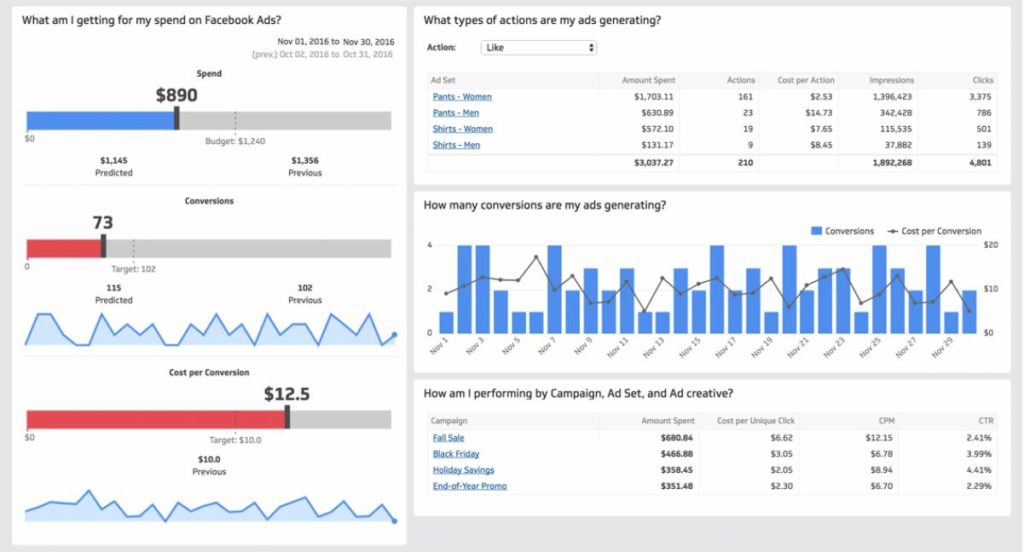
The new year brings new opportunities, new perspectives, and New Year’s resolutions. Something about hitting reset on the calendar gives people fresh eyes and newfound optimism. It’s human nature, and it carries over into our professional lives as well.
Which is probably why here at DemandGen we like to meet with our clients at the beginning of each year to review their business objectives, set goals, and plan strategies.
Goal setting is the topic du jour in January. A recent study found that documenting a marketing strategy increases success by 538 percent, and setting goals improves success by 429 percent. However, so many marketers still don’t make the time to put pen to paper.
The good news is that it’s never too late to start, and spring is right around the corner (out with the old, in with the new, right?).
I’m a big fan of goal setting in general, and I apply it to every campaign and project I work on. Here are my top tips for setting marketing goals and seeing them through:
- Identify marketing goals that align with your organization’s business objectives.
Many marketers struggle with identifying their goals, but it’s the most important step in getting from Point A to Point B. If you don’t define where you are now (Point A) and where you want to end up (Point B), how will you ever know how to get there and if you’ve arrived?
When I ask clients what their goals are for the year, I often hear things like, “We want to grow our business,” or “Increase sales and improve customer retention.” Which is great, but it’s important to drill down further and think about how marketing can help achieve those things. To support these broader business objectives, for example, marketers might set a goal of increasing attendance at webinars and events in order to increase MQLs.
Other marketers sometimes provide a list of the campaigns and projects they plan to work on over the following year, which is also great — just be sure to clarify how each of these tactics support your marketing goals, which in turn support your organization’s overarching business objectives.
- Set achievable goals.
So, what makes a goal achievable versus not achievable? The answer really depends on your unique business needs and your particular industry. Different companies measure success in different ways.
The most important thing to consider is whether it’s measurable, so you can actually quantify your results. Then, think through your goal from start to finish and really question if it’s achievable. For example, say you want to increase revenue by 25 or 40 percent. Is that actually achievable based on past performance, or is it just a target you’d like to reach because it sounds impressive?
Below are a few examples of potentially achievable goals based on past performance:
- Improve event/webinar attendance by 15%
- Increase net new website visitors by 10%
- Improve click-through rates for Product X by 18%
- Boost new memberships by 15%
Setting unachievable goals can backfire spectacularly. Not only will your team miss the mark, but morale will also take a hit, which will likely negatively impact future performance.
- Develop a marketing strategy.
Once you’ve set clear marketing goals that support your topline business objectives, it’s time to figure out how to achieve them. Creating a marketing strategy, and the individual tactics to support it, will serve as your roadmap.
We’ve already defined our goals for 2019 at DemandGen. Each team creates a goal, or path, that rolls up underneath the overarching business goals. We practice what we preach because it works, and our Professional Services organization provides strategy and training to help marketing professionals create and hone their own marketing strategies.
Learn more about how to take control, develop a marketing strategy, and create a process-driven culture in 5 Steps to Eliminate Marketing Chaos.
- Measure and report on your progress regularly.
At many organizations, reporting gets the short end of the stick. In the rush to create content and get campaigns out the door, it’s all too easy to rush off to the next thing and never look back. Or just review individual campaign metrics, gather internal feedback, and trust your gut feeling that it performed pretty well and move on.
Marketers tend to use reports and dashboards to measure smaller goals. Instead of only looking at a specific campaign or how an individual email performed, run a year-to-date report against the same time period last year to get the bigger picture and gauge whether you’re heading in the right direction.
Make sure you set measurable goals, such as increasing last year’s click-through rate traffic by 18 percent. If you don’t quantify or set measurable goals, you won’t be able to identify what worked and what didn’t, which is incredibly useful information when it’s time to set next year’s goals.
If you’re just building out your marketing dashboards and reporting, these common benchmarks are a good place to start (and for a quick primer, check out this blog post):
- Number of leads
- Sales revenue
- Basic email metrics (click-through rates, opens, bounce rate, unsubscribe rate)
- Net new website visits
- Webinar/event attendance
NOTE: Benchmarks vary based on industry, so it’s important to benchmark yourself against competitors in the same market sector.

Be sure to set measurable goals, so you can identify what worked and what didn’t.
When you set goals, you tend to be more successful. And as the saying goes, “Success begets success.” So, start developing data-driven marketing goals to support your organization’s larger business objectives, create a marketing strategy to meet those goals, and identify the right metrics to show you how you did and guide you in your future efforts. And don’t hesitate to let us know if we can help!

Tina Hancock is a DemandGen Campaign Manager. As part of our Campaign Execution Services Team, she helps support client goals by quantifying objectives and developing supporting strategies that help ensure flawless client campaign execution and aim to turn our clients into marketing heroes.
The post 4 Tips for Setting Achievable Marketing Goals — and Meeting Them appeared first on DemandGen.























